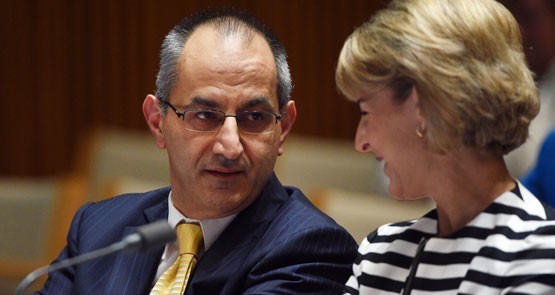
The merger of the Department of Immigration and Customs, which was expected to save money, has instead resulted in a quarter-billion dollar budget blow-out and the failure to achieve multiple performance indicators by the merged entity, according to its annual report.
The merger of the agencies was announced in the 2o14 budget following a recommendation in the National Commission of Audit, and the new entity, the Department of Immigration and Border Protection, commenced operation on July 1, 2015. The National Commission of Audit proposed that the merged entity would have “the potential to generate significant savings by removing duplication, better integrating and improving operational systems and practices, reducing staff, as well as consolidating back office functions and rationalising property”. When then-immigration minister Scott Morrison also announced the creation of the Australian Border Force to supersede Customs within the new merged department, he boasted of the efficiencies that would arise from it, a “dividend” that could be reinvested “back into a more integrated, effective and efficient border protection operation”.
According to the Report on Financial Performance in the department’s annual report for 2015-16, the department’s costs for its administered expenses — that is, funding for implementation of its programs — fell significantly (more than $200 million) compared to 2014-15, and came in below the amount allocated to the department in the 2015-16 budget by more than $80 million — primarily due to the fall in asylum seeker arrivals.
However, Immigration’s departmental expenses — that is, its own internal costs of implementing programs — rather than falling as expected off the back of efficiencies, came in more than $350 million over what was budgeted, meaning the department’s overall spending exceeded its 2015-16 budget allocation by over a quarter of a billion dollars.
While the new body’s Customs function costs only went over budget by $5 million, with another $13 million in additional program costs, Outcome One costs — border protection — were nearly $240 million over budget and Outcome Two — via management and citizenship — blew out by over $100 million (both outcomes actually brought in their program costs below budget). The departmental costs of managing facilities on Nauru and Manus Island blew out by 230% to more than $100 million, along with a nearly $40 million extra cost in administered expenses (although they were offset by an accounting shift of capital charges); border enforcement costs also blew out by nearly $60 million.
The report is also littered with “Not Met” responses on its performance indicators. Initially an important part of the Outcome-Output budgeting framework, public service performance indicators rapidly fell into (to use the phrase from Harakiri) idle formalism with both departments and ministers preferring to avoid using any indicator that might not be met. Immigration’s failure to meet multiple targets in key areas is thus all the more noticeable. Shipping container inspections fell and missed the target by nearly 5%; the air cargo inspection target was missed, processing times for Customs broker licences blew out, Customs clearance of international passenger times worsened, visa application processing delays worsened, and maritime patrol goals were not met for a variety of reasons — although on illegal fishing vessels the lower level of interceptions was a good news story, as it reflected more effective deterrence.
The budget blow-out comes on top of the debacles revealed by the Australian National Audit Office in the department under two governments and multiple ministers in relation to the tendering of detention facilities on Manus Island and Nauru, which were continuing well into this year as a tender process for offshore facilities had to be abandoned following serious probity deficiencies. The ANAO report also found that thedepartment regularly and wildly exceeded its spending authority despite demands from the then-prime minister to curb its costs. Collectively, the reports raise serious questions about the performance of blustering Immigration secretary Mike Pezzullo, who appears increasingly out of his depth, and his executive team, which is mostly imported from Customs and Defence.








Crikey is committed to hosting lively discussions. Help us keep the conversation useful, interesting and welcoming. We aim to publish comments quickly in the interest of promoting robust conversation, but we’re a small team and we deploy filters to protect against legal risk. Occasionally your comment may be held up while we review, but we’re working as fast as we can to keep the conversation rolling.
The Crikey comment section is members-only content. Please subscribe to leave a comment.
The Crikey comment section is members-only content. Please login to leave a comment.